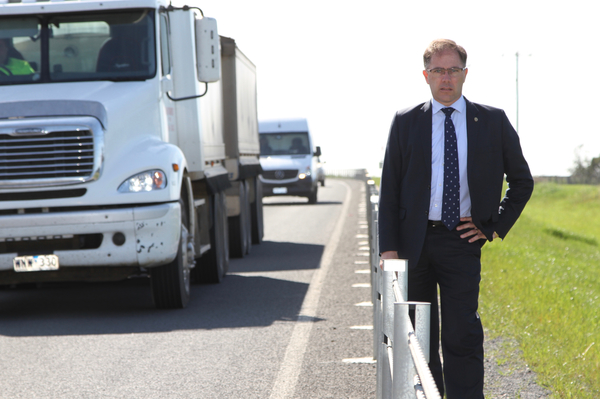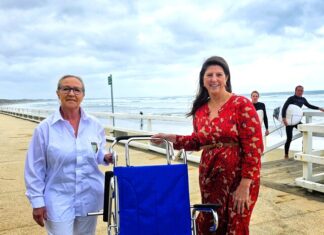A “risky situation” near Winchelsea is part of an MP’s push for answers on a state-wide rollout of new wire-rope barriers.
The barriers on the Princes Highway west of Winchelsea were dangerously placed less than 30 centimetres from the road’s sideline, Richard Riordan told parliament.
He demanded that Roads Minister Luke Donnellan explain the methodology behind the $1 billion project.
Mr Riordan cited “growing frustration” at the installation of hundreds of kilometres of barriers “in inexplicable locations and in quantities that seem to protect no-one”.
In many cases the barriers made roads “more dangerous”, the Member for Polwarth said.
“In one very risky situation on the Princes Highway west of Winchelsea, barriers have been installed less than 30cm from the sideline, on a fog prone road, providing no emergency pull over space, on a road that carries many thousands of cars and trucks per day.
“Minister, Victorians want to know if this roll-out is more than government agency madness, or in fact you can prove providing no safe pull over spaces, and protecting people from grass, is a better priority than fixing crater-size pot holes and killer intersections.”
Mr Riordan said motorists, trucking companies and others were contacting him “daily” about the barriers, comparing them to the “enormous waste” of the government’s abandoned East West Link project.
Luke Donnellan said he “made no apologies” for the project.
“We’re rolling out more than 2000km of flexible safety barriers across Victoria because we know they save lives.
“This system is backed up by not only the latest international research but by Victoria’s own Monash University Accident Research Commission (MUARC).
“Barriers are being rolled out on our most high-risk roads, as determined by a panel of experts from the TAC and VicRoads and extensive consultation is being conducted with local communities and emergency services.”
Mr Donnellan’s office cited MUARC research that the barriers reduced “run-off-road and head-on crashes” by more than 75 per cent.
Countries worldwide, including Sweden, the USA and New Zealand, were installing the barriers, his office said.
Get the latest news to your email inbox FREE!
REGISTER






